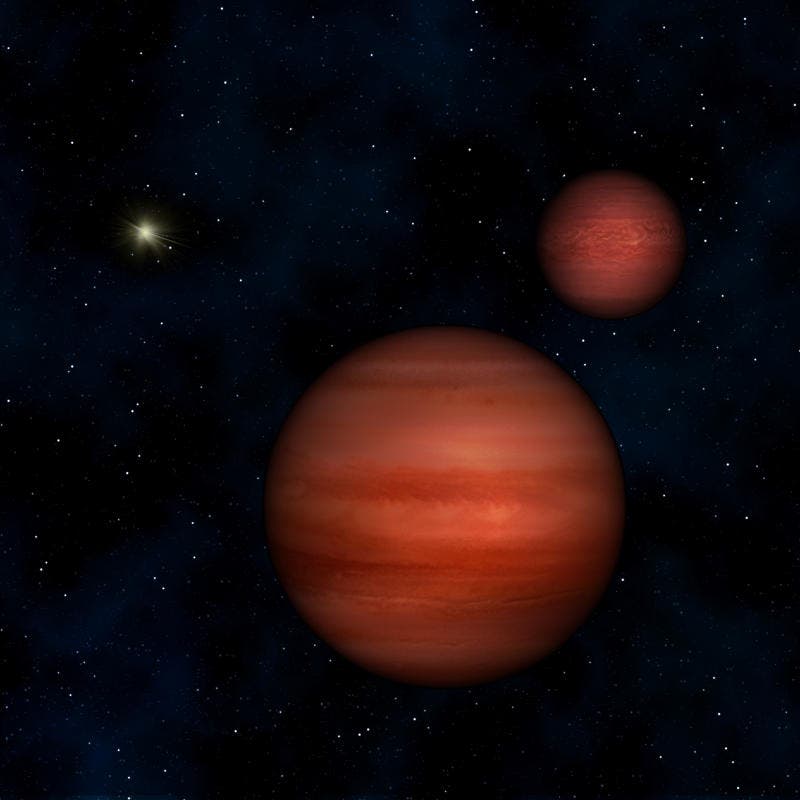A pair of newly discovered stars is the third-closest star system to the Sun – the closest astronomers have found a star system since 1916. The discovery was made by Kevin Luhman, an associate professor of astronomy and astrophysics at Penn State University.

Both stars in the system are brown dwarfs – not exactly stars, but rather substellar objects too low in mass to sustain hydrogen fusion reactions in their cores. As a result, they are not only cold, but also very dim, in someways more similar to giant planets like Jupiter than to a star like our Sun.
“The distance to this brown dwarf pair is 6.5 light years — so close that Earth’s television transmissions from 2006 are now arriving there,” Luhman said. “It will be an excellent hunting ground for planets because it is very close to Earth, which makes it a lot easier to see any planets orbiting either of the brown dwarfs.”
Well I’m fairly positive there won’t be any extraterrestrial beings there that will enjoy rebroadcasts of Jay Leno’s show, but in the distant future, this system may very well be one of the first destinations for manned expeditions outside our solar system.
Detecting such a system wasn’t easy.Luhman studied the images of the sky that the WISE satellite had obtained during a 13-month period ending in 2011.
“In these time-lapse images, I was able to tell that this system was moving very quickly across the sky — which was a big clue that it was probably very close to our solar system,” Luhman said.
By combining these detections of the star system from the various surveys, Luhman was able to measure its distance via parallax and then used another telescope to obtain a spectrum of it, which demonstrated that it had a very cool temperature – hence a brown dwarf.
“It was a lot of detective work,” Luhman said. “There are billions of infrared points of light across the sky, and the mystery is which one — if any of them — could be a star that is very close to our solar system.”
The closest star to our solar system is Alpha Centauri, some 4.3 light years away, and the second closest is Barnard’s Star a very low-mass red dwarf star just less than 6 years away from Earth.






